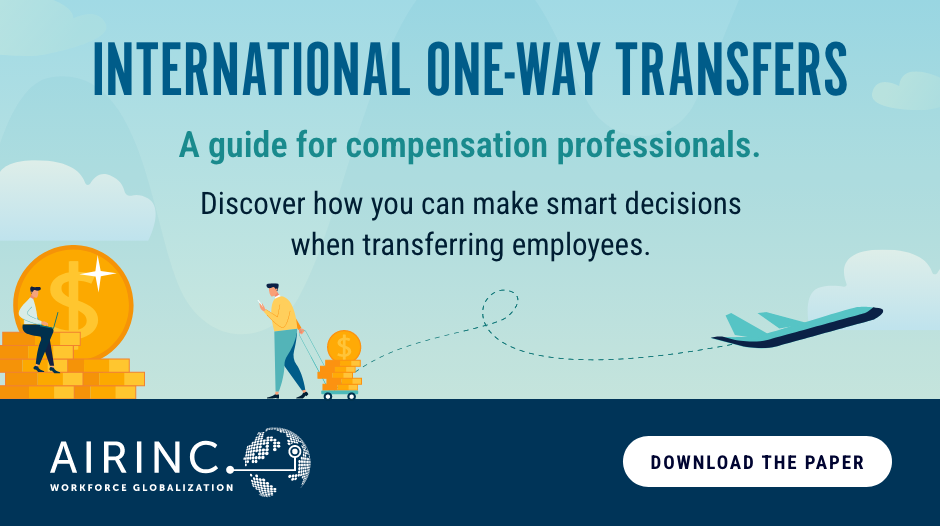Are you prepared to help your organization make good decisions when an employee transfers internationally from one payroll to another? These types of transfers are increasing, and it is important for compensation professionals to be prepared.
Why are they increasing?
There are three main reasons.
- compared to traditional expatriate compensation packages, a payroll transfer is a lower-cost option.
- employees are increasingly requesting to relocate abroad, either for personal or professional development reasons, driving more demand for international transfers.
- new hires -- especially those with specialized skill sets -- are increasingly acquired in one country and immediately transferred to another to fill critical positions.
When employees are transferred internationally, they receive the destination country rate of pay. It is the compensation function’s role to determine the salary, but they often come up against challenges even when there is good salary data available in the destination country.
What Challenges Does this Present to Compensation Professionals?
Compensation professionals are experts at establishing pay ranges for employees hired or working domestically in a particular labor market. The cost of labor in that market is often used to establish pay ranges that are adequate to attract and retain talent in that market. However, when compensation professionals are called on to assess the adequacy of a local salary for someone transferring in from another country, this can often present challenges. What is the company’s definition of “adequate”? If that definition is not meant, what is the company’s policy on addressing any gaps?
When the answers to these questions are not known, it can cause frustrating back-and-forth conversations often involving several stakeholders – HRBPs, Talent Acquisition/Hiring Manager, Global Mobility, and the Employee/Recruit, to name the most likely participants. This can slow down the process of relocating an employee, costing the company money, and negatively impacting the employee’s experience.
Since the talent we need isn’t always where we want it to be, it is critical that compensation professionals become experts at assessing salaries for transferring employees.
How Should Compensational Professionals Assess Salaries for Internationally Transferring Employees?
First, it is important to recognize that the cost of labor is not directly correlated to the cost of living. Even with the most carefully researched salary structures, the midpoint salary for a position in one country versus that of another will not convey the same standard of living. Not only will there be differences in the income tax rates and living costs from one country to another, but the comparison of the two will be a moving target as exchange rates and inflation constantly fluctuate.
This is why it is so critical for the company to establish a methodology for evaluating salaries between two countries.






%20(22)%20(1).jpg)
%20(16).jpg)
%20(26)%20(1).jpg)

